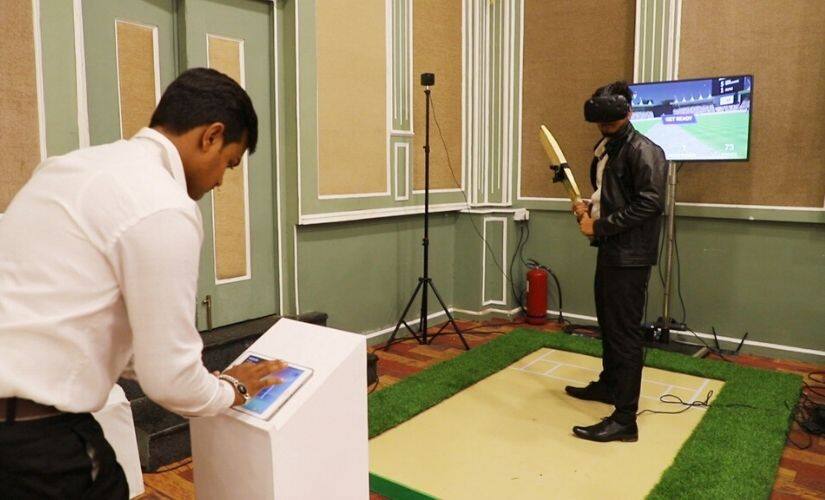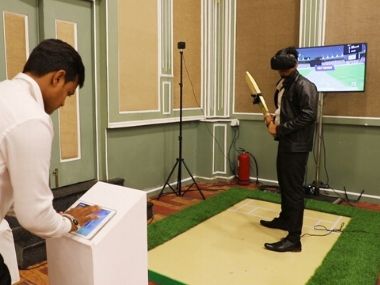As a designer whose work focuses on creating engaging interactive experiences, trans-disciplinary studio Digital Jalebi co-founder Nikhil Joshi is deeply interested in two experiential design trends gaining rapid traction on the Indian landscape: shifting to mediums beyond mobiles, essentially storytelling through immersive media; and data-driven experiences. “New media, eight to nine years back in India, was at a very nascent stage,” says Joshi. “There was no credible market opportunity.” Over the past decade however, companies have been invested in creating experiences and immersive content for the consumer, and the experiential market has seen a sharp rise. The novelty of tech like AR/VR (augmented reality/virtual reality) has now faded among consumers, and the focus is on the quality of the content being consumed. “Most of the end users that interact with our exhibits in metropolitans, where we are largely, they are already exposed to these technologies. So now they understand the value of good design,” explains Joshi. [caption id=“attachment_8087071” align=“alignnone” width=“825”]  Photo credit: Facebook @digitaljalebi.[/caption] The main challenge for designers now is adapting to this new technology. Today, creators only have a couple years of experience, in working with immersive media for instance, compared to a mobile device or the UX (user experience) of a screen or television. “That is all missing, and that is a big challenge now,” he says about the gap in the market today. “What will dominate the market is good content, people who really understand how content should be developed. And that is at a very early stage in India,” says Joshi. “To bring that transition you have to do a lot of hard work, a lot of experience is required,” he adds about the medium shift to immersive tech. This push toward immersive storytelling is in fact symptomatic of a much larger shift toward a connected world. * You’re out for a run, wearing smart clothing. Once back home, the cloth can inform your house system about the temperature that would be best suited for your body and unlock your door when you’re in close proximity. A smart refrigerator can reorder groceries for you of its own accord. “All of this could easily happen at the back without your actual intervention,” says Joshi. Because inevitably, we’re heading toward a world where “everything needs to be connected.” And to keep up with this technology-driven world, Indian design education needs to transform. “There was a huge focus on discipline,” recalls Joshi about his time at design school, where each student had to choose a specialisation. However, the value of this expert who has in-depth knowledge about only one thing is slowly fading. “You can’t have a designer who just understands how cloth is manufactured or designed or stitched or draped. You need a designer who also understands how nanotechnology or LED or something digital could go into that clothing line,” says Joshi, emphasising the need for transdisciplinary designers. “Everyone understands that courses will become more universal in their approach, more transdisciplinary,” he says about education. This will also better prepare Indian designers to partake in the growing field of speculative design, which uses design to try and tackle society’s big problems. “The problems of the world are so transdisciplinary themselves that you have to use technology and design together to be able to solve them,” says Joshi * While some designers are grappling with the challenges of bringing immersive experiences to the physical world, others are invested in creating immersive experiences online. And the most powerful tool at their disposal is data. And important for these designers to understand is that “everything is data.” It can be analysed, and by a smart designer, manipulated. “For a designer to understand that everything can be data and it can be changed is very powerful, very empowering,” says Joshi. With data, tools like graphic design, colour, and typography take a backseat. While those are important, data emerges as a stronger and more elegant manipulator of consumer behaviour. Swiggy, for instance, automatically shows users food and restaurants they have a preference for at a time they normally order. The user only becomes aware of the experience they’re in if their desired listing isn’t immediately visible. “You use your brain when the thing you’re looking for isn’t in front of your eyes. And then you’ve to search for the thing and you’re all exhausted,” says Joshi. Netflix changes the thumbnails of their listings depending on one’s viewing history. “So if I’m more interested in action movies, that’s the thumbnail it’ll show me. That’s the seamless UX,” explains Joshi. Most often, users smoothly glide through these experiences, without realising the amount of data the hosts are constantly collecting and analysing, to ensure that ongoing experience. “I think data-driven, insight-driven experiences would be really, really powerful,” he says. “You never know you’re in them.” And in this world where data rules, “I think design and designers will have a very key role,” says Joshi. Design, in being associated with a visual aesthetic, is the first impression of a product, a means of communicating its function and intention to the user. However, Joshi sees the role of designers expanding beyond the visual aesthetic, with AI (artificial intelligence) being relevant to “every design discipline.” And with the changing definition of design, the role of designers also changes. “They will become strategists more than designers. The true and more powerful designers are those who understand humans, have strong research, understand how data works, and can design all of this.” While data manipulation looks technologically complicated, it is, in essence, understanding and predicting human behaviour. “All of this looks very technology-driven. It’s not technology. It’s purely design. Someone connected the right dots. They are people who are very smart, who understand how humans react,” says Joshi. And once designers understand the implications of this technology, they can respond responsibly. Today, for the most part, data is collected en masse, without consideration of its misuse, and ethical design education becomes important. “If the designers of today have good consciousness about how data can be manipulated, they can, while they’re designing these apps and interfaces, make sure that only the correct form of data is captured. A form of data that can’t be used against you. That sensitivity isn’t there right now,” explains Joshi.
Trans-disciplinary studio Digital Jalebi co-founder Nikhil Joshi is deeply interested in two experiential design trends gaining rapid traction on the Indian landscape: shifting to mediums beyond mobiles — essentially storytelling through immersive media, and data-driven experiences.
Advertisement
End of Article


)
)
)
)
)
)
)
)
)



